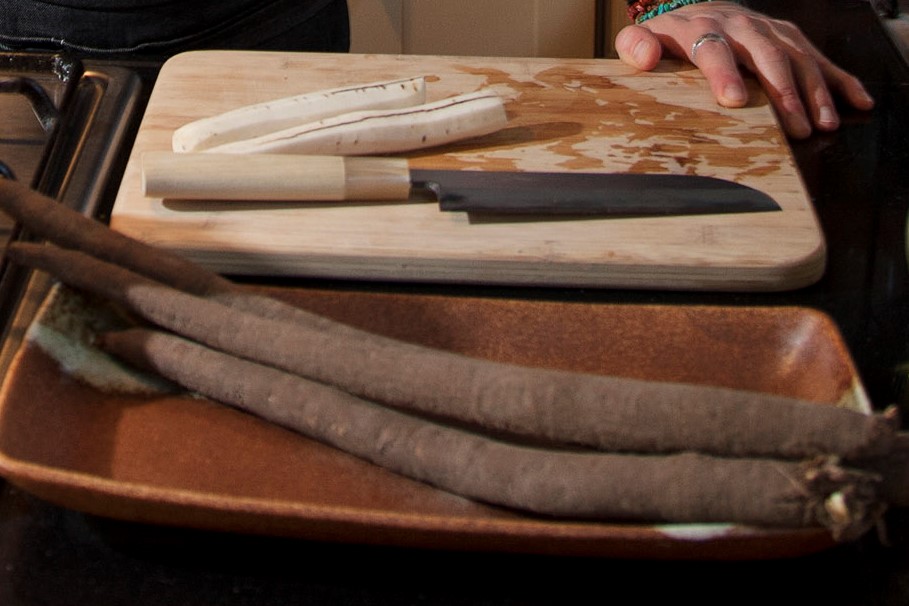
What the future holds
Trying to predict what the future may bring is a fool’s errand. Better, I think, to take the bull by the horns and shape the future into a world we can thrive in, than wait for it to magically conform to our expectations and needs. Many of the challenges humans face today (and will continue facing for a long while), such as overpopulation, the diminution of natural resources, global warming, increases in wealth inequalities, and the increase in the price of food are interwoven. One may find this complexity cause for giving up, but I feel the opposite: even small changes in our daily lives can lead to significant changes, given broad enough adoption. It is both frightening and liberating to realise the extent of control we can exert over our environment (by which I mean everything around us, not just the natural environment) and my hope is that we can recognise this power and use it judiciously.
A recent report from the Institute of Mechanical Engineers in the UK estimated that 30-50% of all the food produced on the planet is thrown away without making it into a human stomach, when the World Health Organization calculates that 1 in 7 people around the world are hungry every day. I do not mean to suggest that the main cause of hunger is the developed world’s penchant for throwing away food, but the fact remains that the world produces today enough food to feed everyone, if we choose to use our resources wisely. So where does all the food go, if not our stomachs? A large proportion of it (30% in the UK) is never even harvested because it doesn’t look pretty. Think of this when you go to the supermarket next and realise all the apples or courgettes that adorn the aisles are perfectly unblemished and even in size and shape. And this is partly because the food industry prefers it this way, but mainly because we, the consumers, prefer it this way. We like our food to be standardised and unnaturally homogeneous and for that we pay a hefty price. At the same time, we throw away, in our own households, tonnes of uneaten food every year. This seems to contradict all the complaints about the increase in the cost of food (an increase which is, of course, very real) and is well within our grasp to change.
So what can you do, after all this seeming doom-and-gloom? A lot, as it turns out. At its core, the solution (or at least a way towards a solution) involves a change of attitude and the rest may follow. Once we stop seeing food as a cheap, disposable, easy-to-grow commodity, we may also try our luck outside the sterile environment of the supermarket and shop at farmers’ markets (with which we are blessed in Groningen). Supporting seasonal ingredients makes financial sense, as well as ecological and culinary sense. Fruits, vegetables, fish, and game are all cheaper and tastier when cooked in season. Avoiding intensively farmed animals may seem like the expensive option, but only if we continue pretending that meat should be the primary ingredient in our diet. Besides being unsustainable, it’s unhealthy and boring to be restricted to mainly-meat meals. Through this column and in my personal life, I intend to promote these good practices more than I have in the past and I urge you to try them out in your own households.
So what is in season in January? Besides oranges, apples, and pears, also various root vegetables, like parsnips, swedes, potatoes, salsify, and its cousin the scorzonera (schorseneer in Dutch). A rather odd-looking, black, long root, scorzonera hides a delicate and sweet flavour. As an accompaniment to a roast dinner for four (roast pheasant perhaps, since that is also in season), peel and wash about 1kg of scorzonera, cut it in 4-5cm pieces and keep in lemon water to prevent it from discolouring. Bring a large pot of water to a boil and add the roots, turning the heat down to medium. After 15 minutes, transfer to an ovenproof dish that holds the scorzonera snugly and add 250ml cream, salt, pepper, and a grating of nutmeg. Top with breadcrumbs and a small handful of grated Gruyère and bake in a 220˚C oven for 15-20 minutes until the top is golden and the cream bubbling.
Links:
www.imeche.org/Libraries/Reports/IMechE_Global_Food_Report.sflb.ashx (pdf)
http://www.eattheseasons.co.uk/index.php
Notes:
This article was originally published in the Universiteitskrant Magazine on January 24th, 2013.
